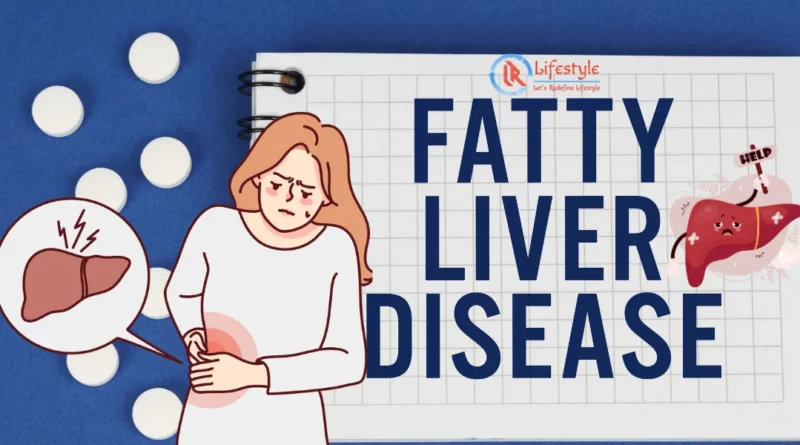Fatty Liver: Causes, Symptoms, Treatment, and FAQs
Introduction
Fatty liver disease, medically known as hepatic steatosis, is a common condition affecting the liver. It occurs when fat accumulates in liver cells, potentially leading to health complications. Fatty liver often remains asymptomatic, but understanding its causes, symptoms, treatment options, and potential complications is crucial for maintaining liver health. In this comprehensive guide, we delve into the intricacies of fatty liver, offering insights into its various aspects.
Understanding Fatty Liver
What Is Fatty Liver?
Fatty liver, as the name suggests, is a condition characterized by the accumulation of excess fat in liver cells. There are two primary types of fatty liver disease:
Non-Alcoholic Fatty Liver Disease (NAFLD): This form of fatty liver occurs in individuals who do not consume excessive alcohol. It is a common condition often associated with metabolic risk factors.
Alcoholic Fatty Liver Disease (AFLD): AFLD is linked to alcohol consumption and may progress to more severe liver conditions if alcohol use continues.
Causes and Risk Factors of Fatty Liver
The Role of Diet and Nutrition
Diet plays a significant role in the development of fatty liver. Consuming a high-calorie diet, especially one rich in saturated fats, sugars, and processed foods, can contribute to fat buildup in the liver.
Obesity and Metabolic Syndrome
Obesity and metabolic syndrome, characterized by factors like insulin resistance and high blood pressure, are strong risk factors for fatty liver disease.
Diabetes and Insulin Resistance
Type 2 diabetes and insulin resistance can increase the likelihood of developing fatty liver, as they impact how the body processes glucose and stores fat.
Genetics and Family History
Genetic factors may predispose some individuals to fatty liver disease, and a family history of the condition can increase one’s risk.
Medications and Medical Conditions
Certain medications and medical conditions, such as rapid weight loss, viral hepatitis, and Wilson’s disease, can contribute to fatty liver development.
Recognizing Symptoms of Fatty Liver
Asymptomatic Fatty Liver
Fatty liver often remains asymptomatic in its early stages, making it difficult to detect without medical tests.
Signs and Symptoms of NAFLD
Symptoms of NAFLD may include fatigue, abdominal discomfort, and mild jaundice (yellowing of the skin and eyes) in some cases.
Symptoms of AFLD
In the case of AFLD, symptoms may include fatigue, abdominal pain, and an enlarged liver.
Diagnosis of Fatty Liver
Physical Examination
A physical examination may reveal an enlarged liver, but further tests are needed to confirm fatty liver disease.
Blood Tests
Blood tests can measure liver enzyme levels and assess for signs of liver inflammation or damage.
Imaging Studies
Imaging tests like ultrasound, CT scans, and MRI scans can visualize the liver and identify the presence of excess fat.
Liver Biopsy
In some cases, a liver biopsy may be performed to confirm the diagnosis and assess the extent of liver damage.
Treatment and Management of Fatty Liver
Lifestyle Changes
The cornerstone of fatty liver management involves lifestyle modifications. This includes weight loss through a balanced diet and regular exercise, which can help reduce fat in the liver.
Dietary Modifications
A healthy diet should emphasize fruits, vegetables, whole grains, lean proteins, and limited sugar and saturated fat intake.
Exercise and Physical Activity
Regular physical activity is essential for improving insulin sensitivity and promoting liver health.
Medications
In some cases, medications may be prescribed to manage specific aspects of fatty liver disease, such as diabetes or cholesterol levels.
Weight Loss Surgery (Bariatric Surgery)
For severely obese individuals with fatty liver disease, weight loss surgery may be recommended.
Potential Complications
Non-Alcoholic Steatohepatitis (NASH)
NASH is a more severe form of NAFLD characterized by liver inflammation and can lead to fibrosis and cirrhosis.
Cirrhosis
Advanced liver fibrosis can progress to cirrhosis, a condition marked by extensive scarring and reduced liver function.
Liver Cancer (Hepatocellular Carcinoma)
In some cases, long-standing fatty liver disease may increase the risk of hepatocellular carcinoma, a type of liver cancer.
Cardiovascular Complications
Fatty liver is associated with an increased risk of cardiovascular diseases, including heart attack and stroke.
Other Health Risks
Fatty liver may also contribute to other health concerns, such as sleep apnea, polycystic ovary syndrome (PCOS), and kidney disease.
FAQs about Fatty Liver
What are the common causes of fatty liver disease?
The primary culprits behind fatty liver typically include obesity, particularly when excess weight is concentrated around the abdominal area, the presence of type 2 diabetes mellitus or insulin resistance, and elevated levels of both blood cholesterol and triglycerides.
Common causes include poor diet, obesity, diabetes, genetics, certain medications, and excessive alcohol consumption (in AFLD).
Is fatty liver reversible?
In many cases, fatty liver is reversible through lifestyle changes, especially in its early stages.
Can fatty liver lead to more serious liver conditions?
Yes, fatty liver can progress to conditions like NASH, cirrhosis, and liver cancer.
What lifestyle changes can help manage fatty liver?
A balanced diet, weight management, regular exercise, and limited alcohol consumption are key lifestyle changes.
Are there any medications for treating fatty liver?
Medications may be prescribed to manage related conditions (e.g., diabetes), but there is no specific medication for fatty liver.
Can fatty liver be prevented?
Prevention involves maintaining a healthy weight, balanced diet, regular exercise, and moderate alcohol consumption.
What foods cause fatty liver?
Numerous research studies have indicated that the overconsumption of carbohydrates, especially refined varieties, as well as high levels of fats, particularly saturated fats, and an increased intake of meat-based protein, can contribute to the development of Non-Alcoholic Fatty Liver Disease (NAFLD) (14–18). Additionally, heightened consumption of soft drinks and meat has been linked to NAFLD in adult populations (14).
Conclusion
Fatty liver is a prevalent condition that warrants attention and proactive management. Whether you’re seeking information on its causes, looking for ways to alleviate symptoms, or aiming to prevent complications, this guide offers a comprehensive resource to navigate the complexities of fatty liver disease.
However, it’s essential to consult a healthcare provider for personalized guidance and treatment options tailored to your specific situation. Maintaining liver health is crucial for overall well-being, and early intervention can make a significant difference in managing fatty liver effectively.
Also Read:
The Complete Guide to ADHD: Understanding, Managing, and Thriving
For News related to entertainment visit our entertainment website:
https://www.glamworldtalks.com/



